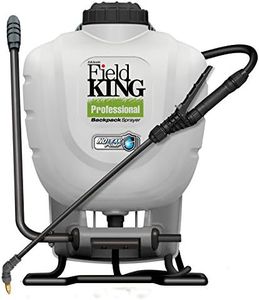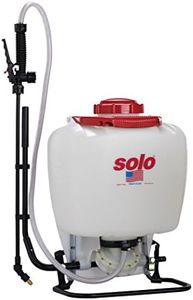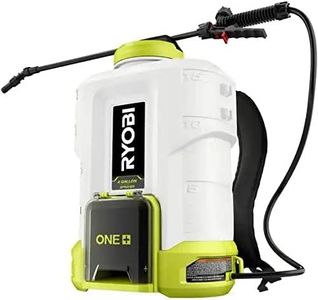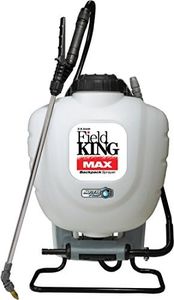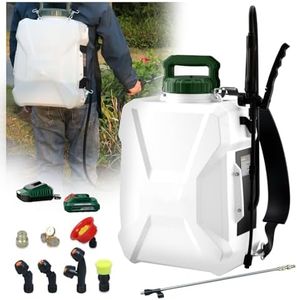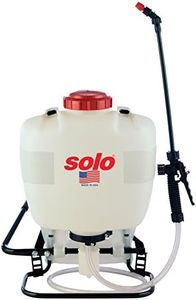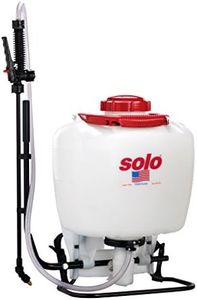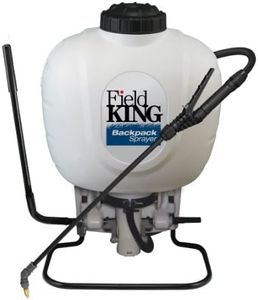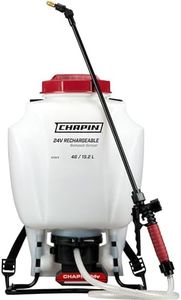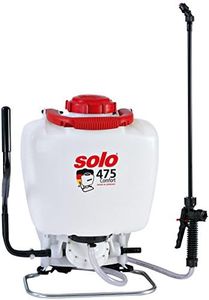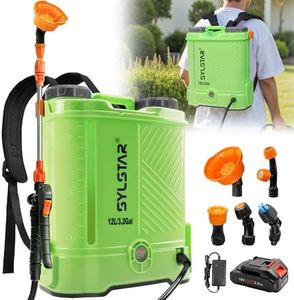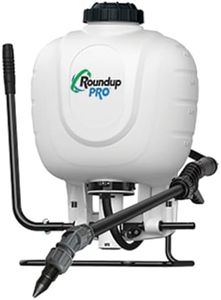We Use CookiesWe use cookies to enhance the security, performance,
functionality and for analytical and promotional activities. By continuing to browse this site you
are agreeing to our privacy policy
10 Best Backpack Sprayers
From leading brands and best sellers available on the web.Buying Guide for the Best Backpack Sprayers
Choosing the right backpack sprayer is all about understanding your specific needs—like the size of area you'll be covering, the type of liquids you'll be dispensing, and how often you'll use it. A good fit means your sprayer will be comfortable, efficient, and durable for regular use, whether you’re applying fertilizers, pesticides, or cleaning solutions. Taking time to weigh the key specs will help you avoid disappointment by making sure the sprayer matches your workload and comfort preferences.Tank CapacityTank capacity refers to how much liquid the sprayer can hold at once. This is important because a larger tank means fewer refills, which is handy for big areas, but also makes the backpack heavier and harder to carry. Backpack sprayers typically come in sizes ranging from roughly 2 gallons (for smaller jobs or lighter users) up to 6 gallons (for larger properties or heavy-duty use). If you’re covering small gardens, light jobs, or don’t want a heavy load, a smaller tank is better. For treating larger gardens, orchards, or commercial spaces, a bigger tank can help you work longer without stopping.
Pump TypeThe pump is what builds the pressure to spray the liquid. There are two main types: manual (hand-pump or lever-based) and battery-powered (electric). Manual pumps are lighter and usually more affordable, but require regular pumping as you spray, which can be tiring over long periods. Battery-powered pumps let you spray continuously with less effort, ideal for larger or more frequent jobs. If you’re spraying just occasionally in a small area, a manual pump is often fine. If you anticipate frequent or extended use, or have limited strength, an electric pump will be more comfortable.
Spray Wand and Nozzle OptionsThe spray wand lets you direct the liquid where you want it, and the nozzle controls the spray pattern (like a fine mist or a direct stream). Longer wands help you reach farther or avoid bending, while a variety of nozzle types allow you to adjust for different tasks—mist, fan, or stream sprays. For basic watering or light-duty work, standard nozzles are sufficient. If you plan to do precise chemical applications or need to reach under leaves and into tight spots, look for adjustable nozzles and wands.
Comfort FeaturesComfort features include padded shoulder straps, adjustable harnesses, and sometimes waist belts or back pads. These make carrying a full tank easier on your body, especially if you’ll be spraying for more than a few minutes at a time. For users with small frames, ergonomic designs with lots of adjustments are especially helpful. Always consider how long you’ll carry the sprayer and choose comfort features that match your physical needs.
Build Materials and DurabilityThe material of the tank, hose, and wand affect how long the sprayer will last and what types of chemicals it can handle. Common materials include plastic and stainless steel. Heavy-duty plastic is lightweight and resistant to many chemicals, making it good for most yard and garden work. Stainless steel parts offer extra durability, especially for tougher jobs or frequent use. If you’ll use your sprayer regularly or with strong chemicals, look for higher-quality materials to avoid leaks and premature wear.
Ease of Cleaning and MaintenanceA sprayer that’s easy to take apart and clean will last longer and perform better, since residue buildup can clog nozzles and pumps. Some models offer wide openings for easy filling and rinsing, or have removable parts. If you’ll be switching between different chemicals often or want to keep maintenance simple, look for features that make cleaning hassle-free.
